Like many folks, I've converted to working at home during the last year. As a programmer, I don't need much in the way of equipment - a computer and a couple of monitors, and I'm good to go.
I have a small "office" in the attic of my house. For most of the last year, I had a standard desk and office chair in there. I worked in my little cubby hole just like I did in the normal office in the company building.
For the last month or so, I've been using this setup in place of a regular desk and office chair:
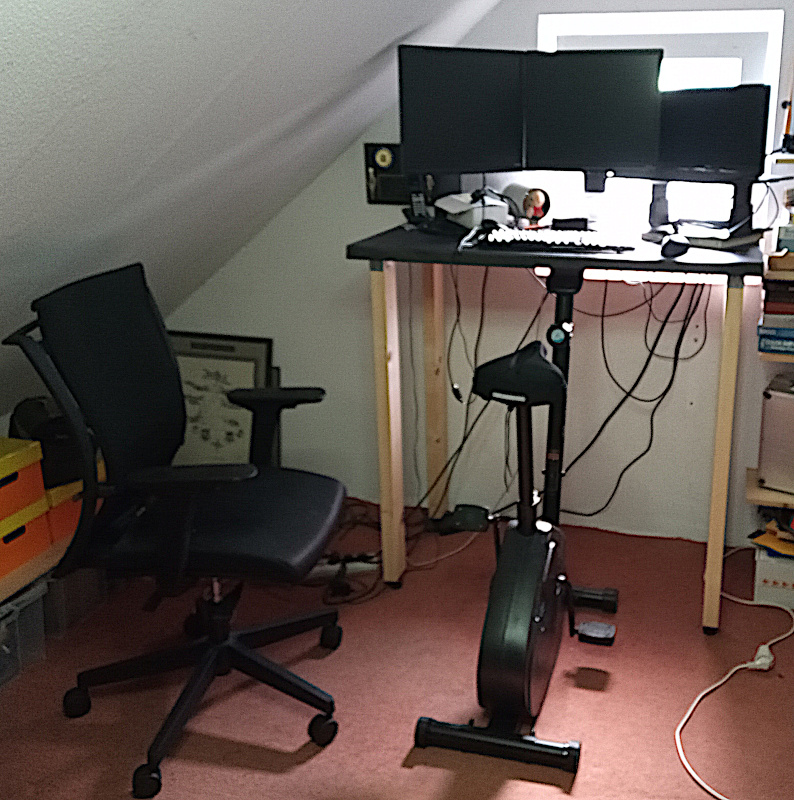 That's a very high desk with an exercise bike under it.
That's a very high desk with an exercise bike under it.The idea sort of presented itself.
About a month ago, a friend of my wife returned a small "under desk exercise bike" that we had loaned out.
That's this thing:
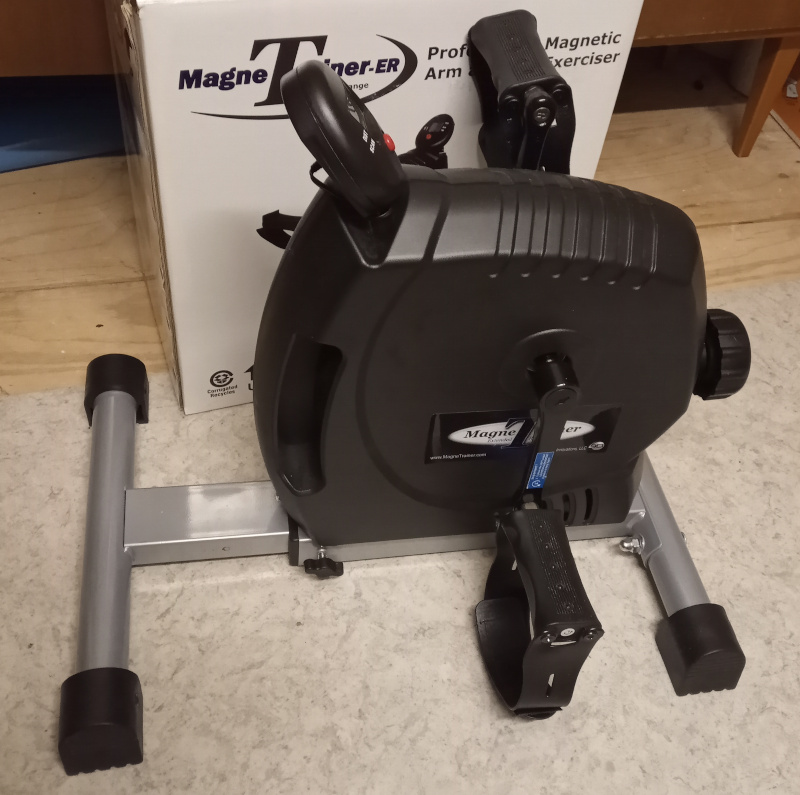 My wife used that thing as part of her therapy after having her knee replaced.
My wife used that thing as part of her therapy after having her knee replaced.I used to be a really active person. As a young man, I was 5 feet, 10 inches tall and weighed 120 pounds - the kind of bean pole who could change clothes behind a telephone pole. I used to spend about two hours a day walking - not sports, but just getting from A to B to do things. I walked to work, I walked to get lunch and go back to the office, I walked home ( the long way) in the evenings to take care of the grocery shopping (and pick up the occasional bag of kitty litter.)
When my wife and I moved to the small town we live in, the walking ceased. I had to drive every where because nothing is close enough to walk. I drove twenty miles to work. I drove from the office to someplace to get lunch and go back to work. I drove to the grocery store on the way home.
My weight has, naturally, gone up over the years. If I stand sideways behind a telephone pole, you can see my front and my backside at the same time.
Working from home has actually made things worse. I used to get at least the 5 minute walk from the parking lot to the office and back. Now all I get is the climb up the stairs to my office in the attic.
I looked at that little exercise bike and thought "Ya know, it wouldn't bother anybody at all if I put that under my desk in my home office."
So I did it - and regretted it.
My desk didn't have much room under it and I kept bumping my knees. My office chair kept rolling away from the exercise bike while I was trying to pedal.
The chair needed something to stop it from rolling away, and the desk needed to be higher or at least deeper.
I kept thinking it over and coming up with horrible, wobbly constructions that would be difficult and expensive to build and that probably wouldn't work very well.
I went to buy new tires for my real (and rarely used) bike one day last month. The shop I went to happened to also sell exercise bikes. I walked by one, and hopped on the seat on a whim. It fit perfectly, and was surprisingly cheap. I ordered one on the spot and had it delivered to my house.
The weekend after that, I went to one of the local building goods stores and bought a piece of kitchen counter top. The stores often have small pieces left over after installing kitchens. They sell those pieces pretty cheap. I bought one that would be wide enough and deep enough to fit my computers and monitors for about 10 Euros.
I had a bunch of lumber in the garage that would serve as legs. I bought some angle brackets and a bunch of screws to put it all together.
From the lumber and the countertop, I built a desk high enough for the new exercise bicycle (and my knees) to fit under.
Thus was born the "Exer-desk."
I spend about eight hours a day on the saddle of the exercise bike. I don't pedal for all of those eight hours, but even just sitting still takes more effort than lounging around in a regular office chair. I spend most of the time "half standing" - weight on one foot on the pedal with the other leg over the saddle so that it can rest.
I do spend some time during the day actively pedaling. I try to pedal during...
 Joseph Eoff
Joseph Eoff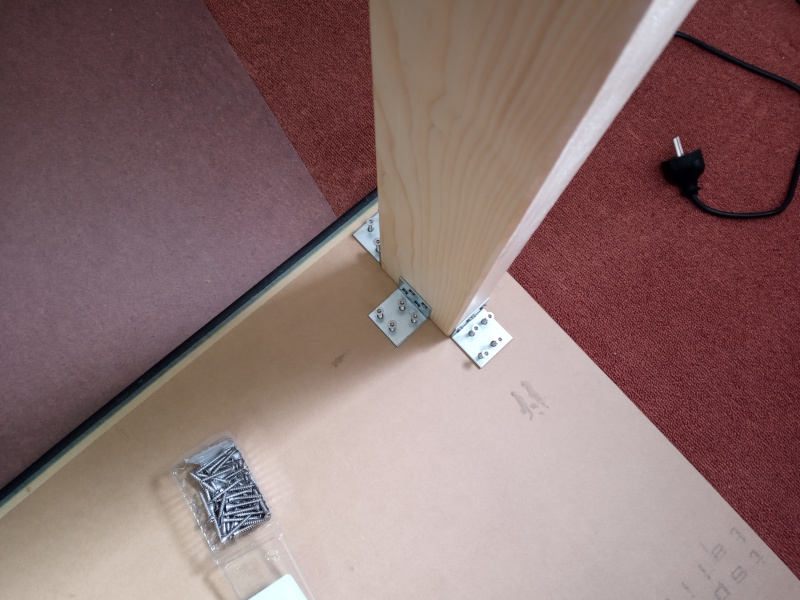
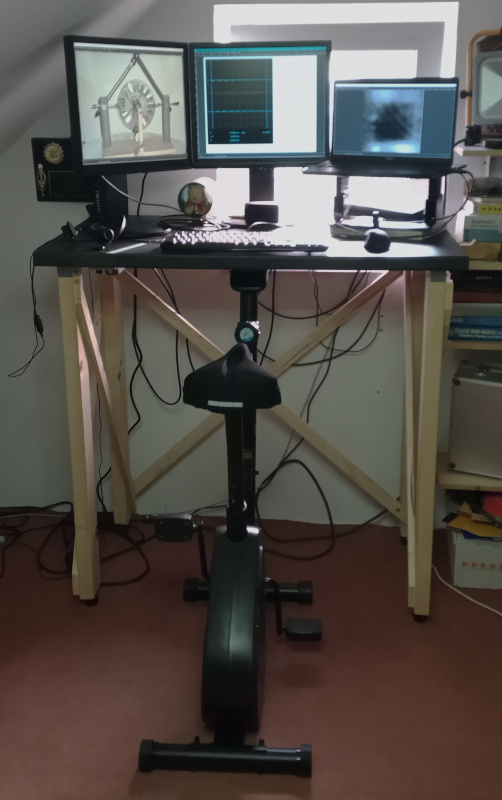 Industrial ugly, but much more solid.
Industrial ugly, but much more solid.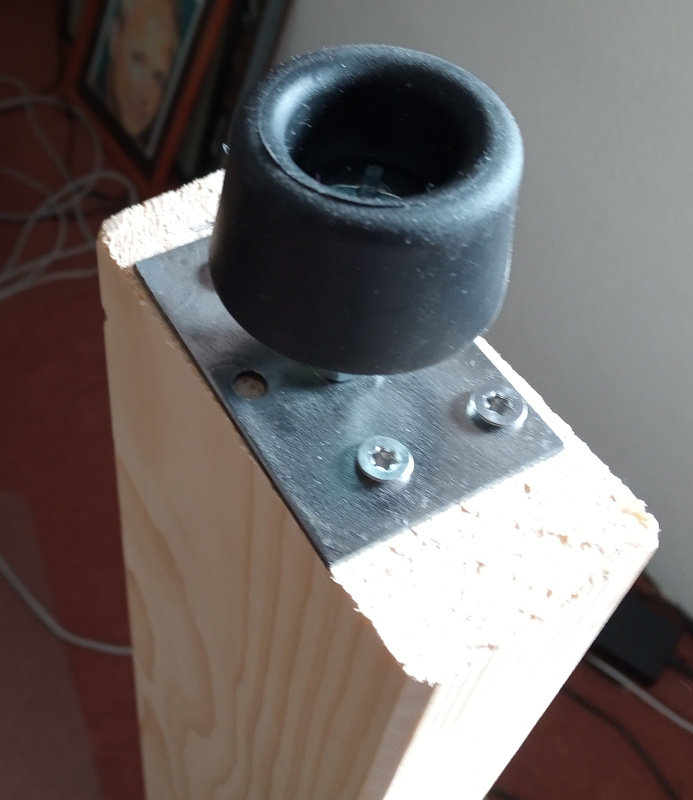 Adjustable feet, solidly attached to the legs of the desk.
Adjustable feet, solidly attached to the legs of the desk.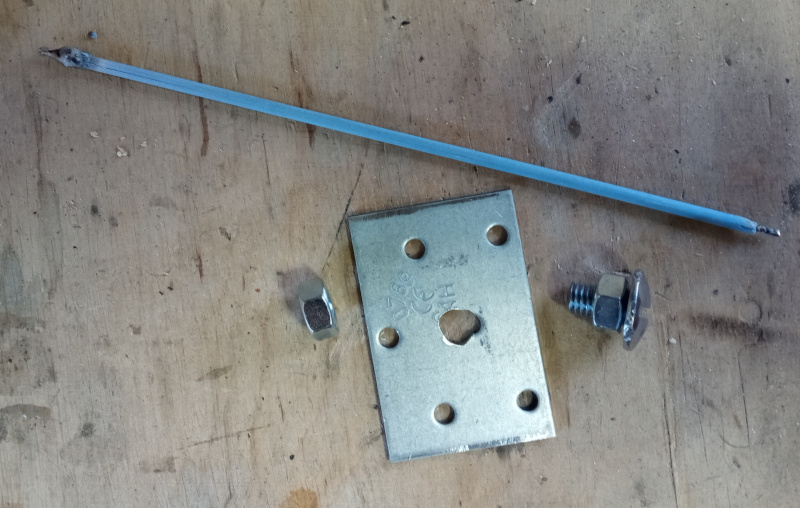 That's a rod of silver solder there in the picture above the steel plate. Some people weld, others braze. I silver solder.
That's a rod of silver solder there in the picture above the steel plate. Some people weld, others braze. I silver solder. It looks like this when I'm soldering things together:
It looks like this when I'm soldering things together: The torch is lying there on the other workbench while one of the steel plates with a soldered nut is clamped in the vice.
The torch is lying there on the other workbench while one of the steel plates with a soldered nut is clamped in the vice.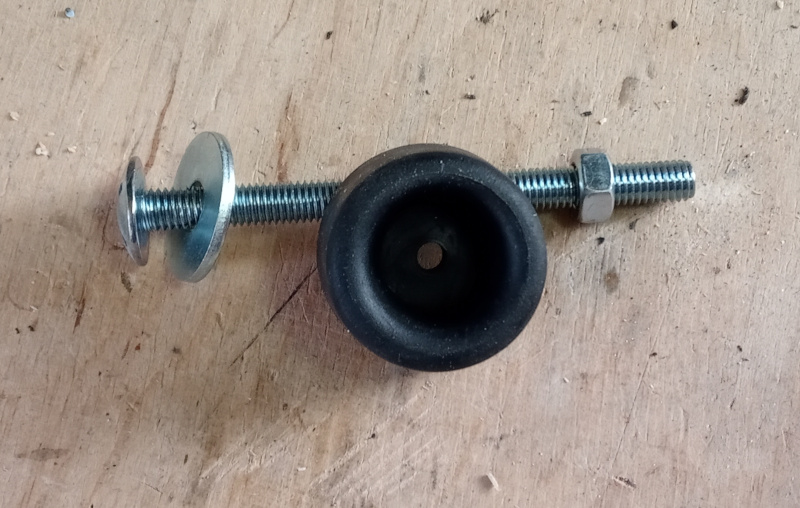
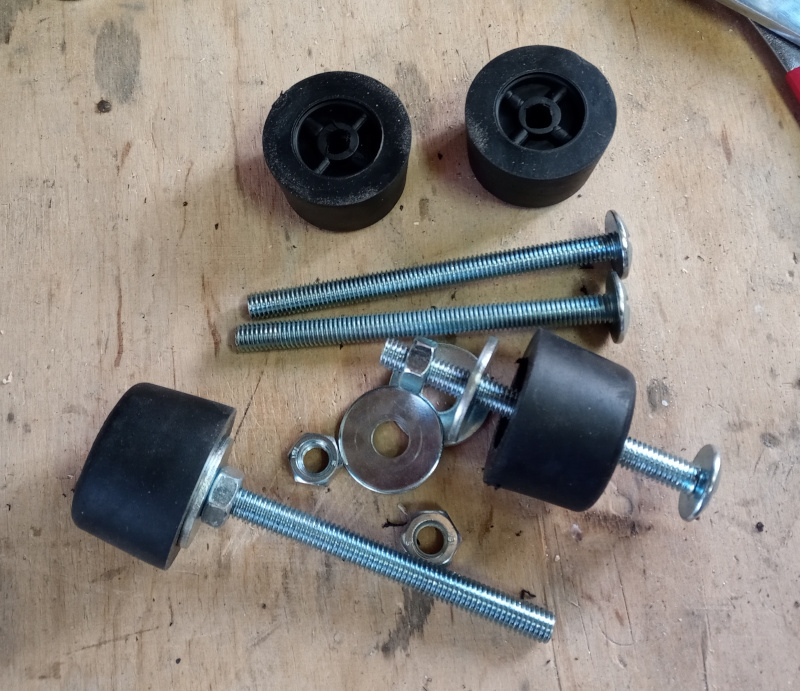 The big flat screw heads and the washer keep the bolt from tearing out of the (relatively) soft rubber. The nut holds it all together.
The big flat screw heads and the washer keep the bolt from tearing out of the (relatively) soft rubber. The nut holds it all together.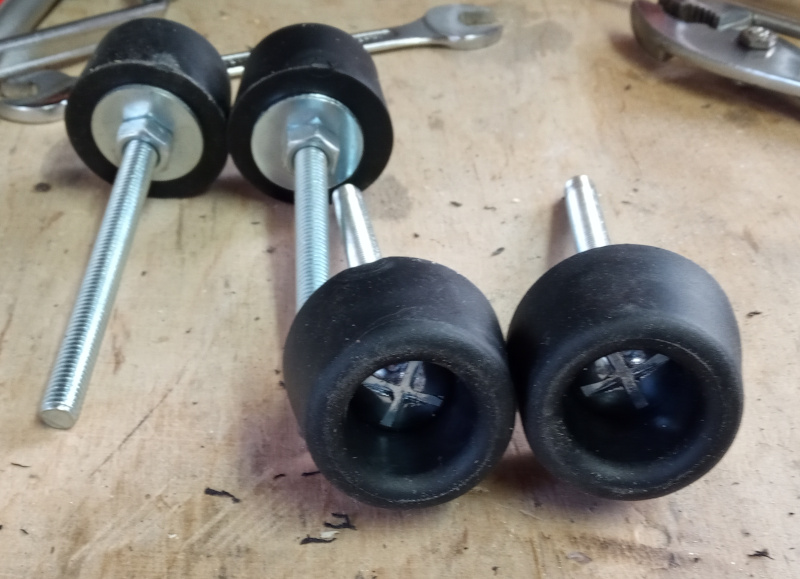
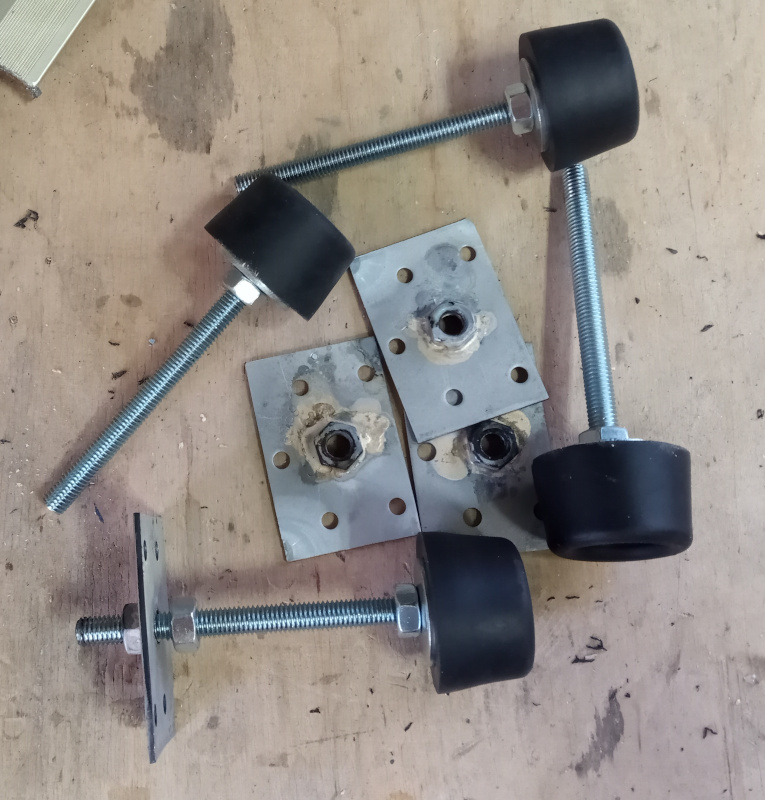 When I put them all together, I put in an extra nut to lock the adjusting nut.
When I put them all together, I put in an extra nut to lock the adjusting nut.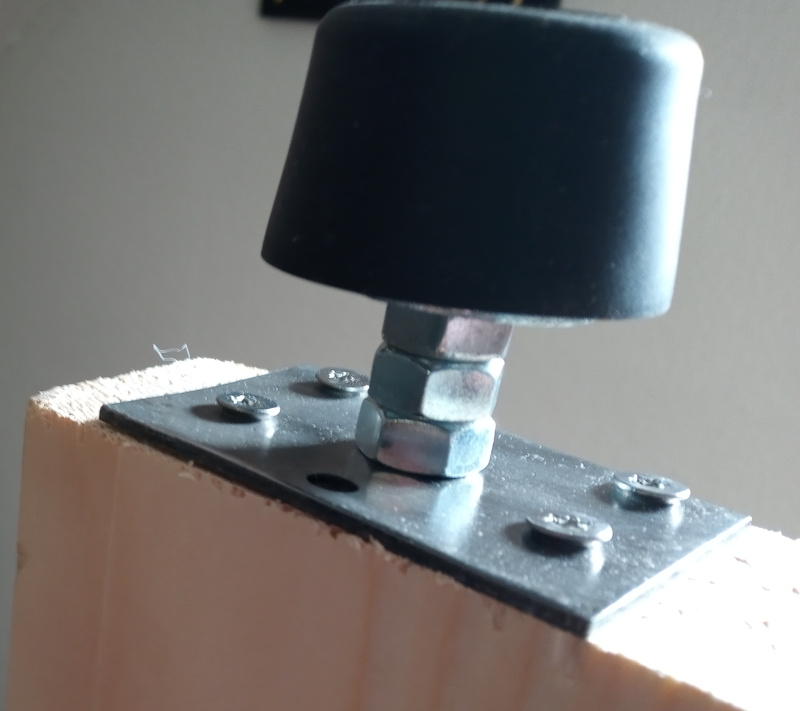 The long 8 mm screws go into 9mm holes I drilled into the legs. The plates are screwed to the legs to keep things together.
The long 8 mm screws go into 9mm holes I drilled into the legs. The plates are screwed to the legs to keep things together.



 matthewkleinmann
matthewkleinmann
 Jan
Jan
 WJCarpenter
WJCarpenter
Hi,
I've also wanted to do this since a long time (with a more comfortable recumbent-style seat) , so this page is a nice excuse to brainstorm about it.
After 2 years, you've commented on your project that "I find that I don’t pedal all that much.", which makes me wonder about the psychology of such a setup. Someone suggested to make your monitor turn off if you don't pedal enough.
For some stuff I do, I need my full concentration and can't pedal all the time. Instead, a revolution counter could use up stored revolutions at a given rate, so that I can "store up" revolutions during more idle activities then stop pedaling during more involved work.
Shutting off the monitor is also quite drastic, since it renders the computer completely unusable. I need to find a punishment that is annoying enough to be good motivator, but tolerable enough to be endured in emergencies. I don't ever want to reach the point of turning off the device because I'm too busy with work, because I'll start using weaker and weaker justifications to do so as time passes on.
While low intensity exercise may be best for pure weight loss, I'd also like to get fitter. Exhaustion scales non-linearly with intensity of exercise. (pedaling one hour at 200 watts is a lot more work than doing so for two hours at 100 watts) As such, I'd like to add an extra bonus that multiplies your revolutions when you pedal faster.
Thanks for getting me to think about this project again.